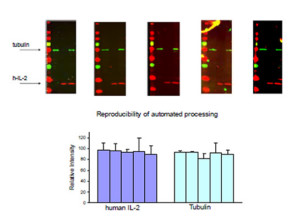Until recently, Western blots were the same slog as when they were first described in 1979.
The multiple steps of traditional Western blots have remained much the same since the technique’s initial development.
The process seems simple enough.
First, you separate proteins by size (or charge) using gel electrophoresis.
Then, you transfer them to a membrane.
And finally, you probe the membrane using antibodies to your particular protein.
Because the process seems so simple, Western blots have been a staple in protein research for many years, allowing researchers to identify proteins within tissues and cell cultures. So, it’s easy to take them for granted.
The problem is that although the steps may feel automatic to some scientists, the more handling and incubation steps there are, the more likely it is something will to go wrong.
There are well-known challenges in Western blot research.
From start to finish, the traditional manual processing of Western blots takes about two and a half days.
During that time, several variables in the sequence of events decrease the reliability of Western blot research.
These include:
- variabilities in storage and the preparation of solutions
- shaking inconsistencies
- temperature control errors
- incorrect incubation timing
All of these increase errors decrease reliability and accuracy. And, they ruin the blots that just took two and a half days to run. That means the whole process has to be re-run.
Needless to say, research utilizing the Western blot has been a frustrating process.
Because of the aforementioned challenges, Western blots have become the subject of intense scrutiny, fodder for fraud, and one the most common reasons behind research retractions.
Western Blots: The Advantage of Automated Processing

Western blot manual vs automated processing
In recent years, new instruments have come on the market to optimize some of the main steps, namely electrophoresis, blotting, and visualization. For example, many researchers still use chemiluminescence detection and X-ray film. However, the introduction of digital fluorescence imaging has boosted the technique’s sensitivity and reliability. As a result, western blotting is increasingly becoming “quantitative” rather than semi-quantitative. New advances automating some parts of the process make Westerns a little easier and much more reliable.
Western blots processed automatically increase high-quality, reliable results.
With automated processing, the manual techniques are now obsolete.
Automated Western blot processing is the new industry standard for Western blot research.
For Automated Western blot processing, Precision Biosystems has several popular product lines, all with the goal of saving you money and making Western blotting simple



